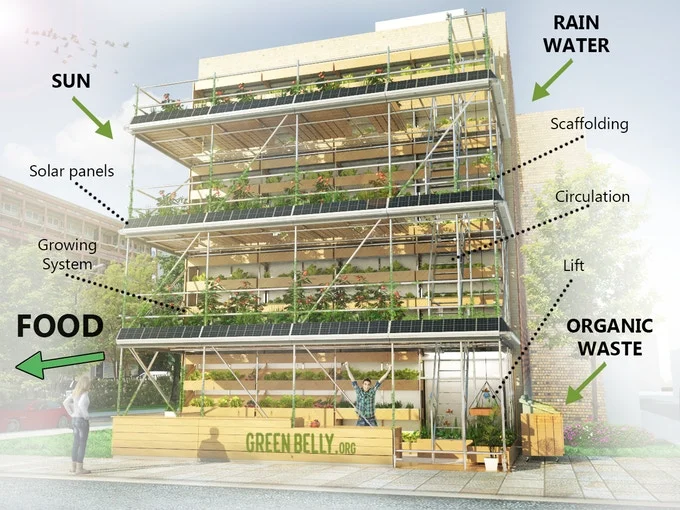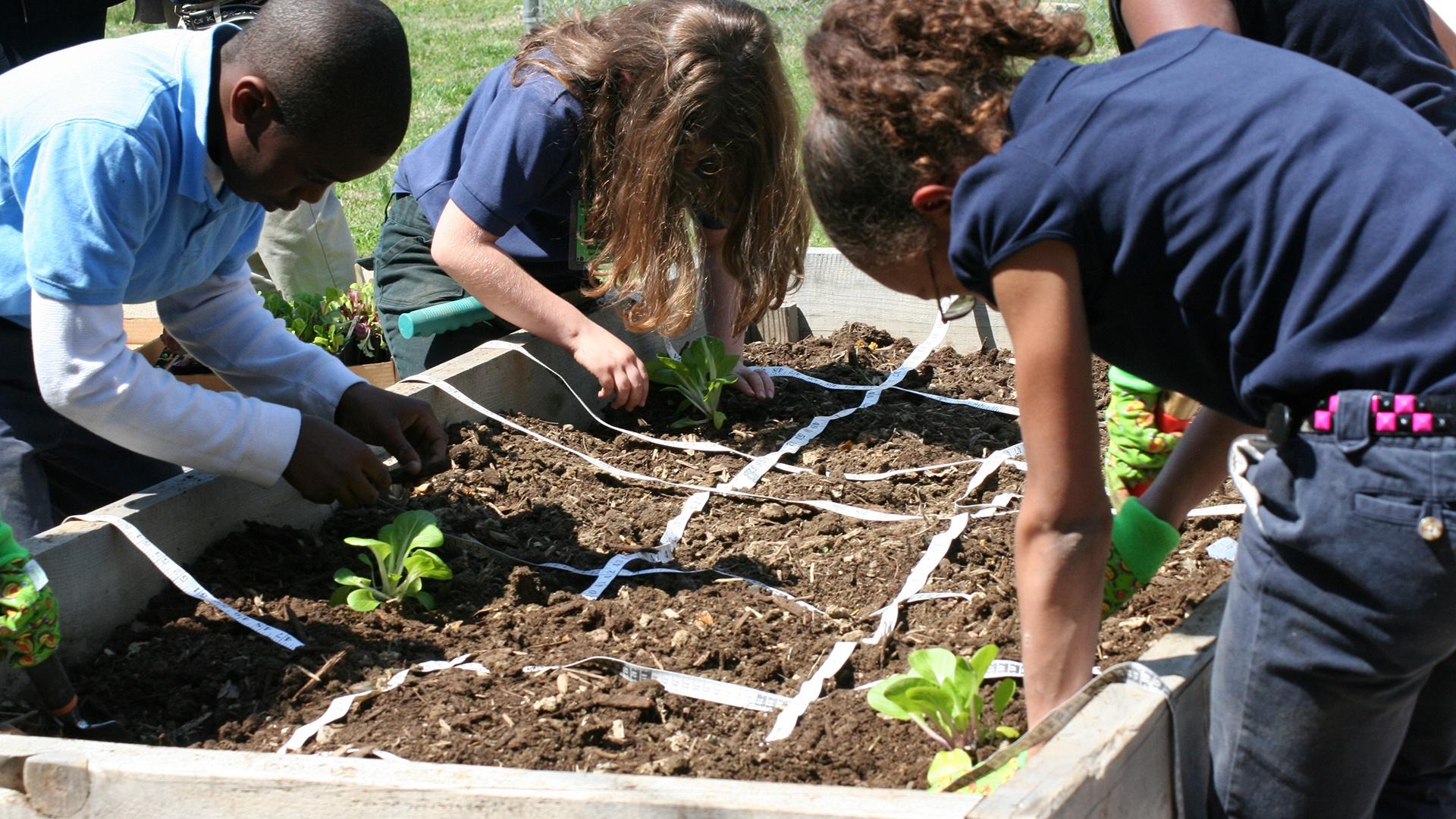
Introduction: The Rise of Urban Farming
In an era marked by increasing urbanization and a growing awareness of environmental issues, the concept of urban farming has blossomed into a vital movement. Urban farming, the practice of cultivating, processing, and distributing food in or around urban areas, addresses multiple challenges simultaneously. From reducing food miles and promoting local food security to enhancing community engagement and improving the urban environment, urban farms are reshaping our cities. As we look towards a more sustainable future, the design of these urban farms becomes paramount. Sustainable urban farm design focuses on creating systems that are not only productive but also environmentally responsible, economically viable, and socially equitable.
Understanding Sustainable Urban Farm Design Principles
Sustainable urban farm design is more than just planting vegetables in a city setting. It involves a holistic approach that considers the intricate relationships between the environment, the community, and the economic factors at play. Several core principles guide this approach, ensuring that urban farms contribute positively to the urban ecosystem.
1. Environmental Stewardship
Environmental stewardship lies at the heart of sustainable urban farm design. This principle emphasizes minimizing the environmental impact of farming practices through various strategies:
- Water Conservation: Implementing water-efficient irrigation techniques, such as drip irrigation and rainwater harvesting, is crucial. These methods reduce water waste and conserve precious resources, especially in water-stressed urban environments.
- Soil Health: Building and maintaining healthy soil is essential for productive and sustainable urban farms. Practices like composting, cover cropping, and no-till farming enhance soil fertility, structure, and water retention capacity.
- Biodiversity: Promoting biodiversity within the urban farm ecosystem is vital for resilience and ecological balance. Integrating diverse plant species, attracting pollinators, and creating habitats for beneficial insects contribute to a thriving ecosystem.
- Waste Reduction: Minimizing waste generation and maximizing resource utilization are key aspects of environmental stewardship. Composting food scraps and yard waste, using recycled materials, and implementing closed-loop systems reduce the environmental footprint of urban farms.
2. Community Engagement
Urban farms are not just about growing food; they are about building community. Engaging local residents in the planning, operation, and enjoyment of urban farms fosters a sense of ownership and strengthens social bonds. This principle involves:
- Participatory Design: Involving community members in the design process ensures that the urban farm meets their needs and reflects their values. This can be achieved through workshops, surveys, and collaborative planning sessions.
- Educational Opportunities: Providing educational programs on sustainable agriculture, nutrition, and environmental stewardship empowers community members to adopt healthier lifestyles and become advocates for sustainable practices.
- Volunteer Programs: Offering volunteer opportunities allows residents to actively participate in the operation of the urban farm, fostering a sense of connection to the land and to each other.
- Community Events: Hosting regular events, such as farmers’ markets, cooking demonstrations, and educational workshops, creates a vibrant community hub and promotes healthy eating habits.
3. Economic Viability
For urban farms to be truly sustainable, they must be economically viable. This means generating sufficient income to cover operating costs, invest in infrastructure improvements, and provide fair wages for workers. Strategies for achieving economic viability include:
- Diversified Revenue Streams: Exploring multiple revenue streams, such as selling produce at farmers’ markets, supplying local restaurants, offering subscription boxes, and hosting educational workshops, reduces reliance on a single source of income.
- Efficient Resource Management: Minimizing input costs through efficient resource management practices, such as water conservation, composting, and integrated pest management, improves profitability.
- Value-Added Products: Processing and packaging produce into value-added products, such as jams, pickles, and sauces, increases revenue potential and extends the shelf life of harvested crops.
- Partnerships: Collaborating with local businesses, organizations, and government agencies can provide access to funding, resources, and markets.
Key Considerations in Sustainable Urban Farm Design
Designing a sustainable urban farm requires careful consideration of various factors, including site selection, infrastructure development, crop selection, and pest management. Each of these aspects plays a critical role in the overall success and sustainability of the farm.
1. Site Selection
The location of an urban farm significantly impacts its productivity and sustainability. Factors to consider when selecting a site include:
- Soil Quality: Assessing soil quality is crucial for determining the suitability of a site for growing crops. Soil testing can identify potential contaminants and nutrient deficiencies, allowing for appropriate remediation measures.
- Sunlight Exposure: Adequate sunlight exposure is essential for plant growth. Choosing a site with sufficient sunlight throughout the day is critical, especially in densely populated urban areas where buildings may cast shadows.
- Water Availability: Access to a reliable water source is necessary for irrigating crops. Consider the availability of municipal water, rainwater harvesting potential, and the feasibility of installing a well.
- Accessibility: Selecting a site that is easily accessible to community members, volunteers, and customers is important for promoting community engagement and facilitating the distribution of produce.
- Zoning Regulations: Understanding local zoning regulations is essential for ensuring that the urban farm complies with all applicable laws and ordinances.
2. Infrastructure Development
Developing the necessary infrastructure is crucial for creating a functional and sustainable urban farm. Key infrastructure components include:
- Raised Beds and Containers: Constructing raised beds and using containers can improve soil drainage, facilitate accessibility, and allow for growing crops on rooftops and other impermeable surfaces.
- Irrigation Systems: Installing efficient irrigation systems, such as drip irrigation and soaker hoses, minimizes water waste and ensures that crops receive adequate moisture.
- Composting Systems: Implementing composting systems allows for recycling organic waste and creating nutrient-rich soil amendments.
- Greenhouses and Hoop Houses: Constructing greenhouses and hoop houses extends the growing season and protects crops from harsh weather conditions.
- Storage Facilities: Providing adequate storage facilities for tools, equipment, and harvested produce is essential for maintaining efficiency and minimizing spoilage.
3. Crop Selection
Choosing the right crops to grow is critical for maximizing productivity and meeting the needs of the local community. Factors to consider when selecting crops include:
- Climate and Growing Season: Selecting crops that are well-suited to the local climate and growing season ensures optimal yields.
- Market Demand: Identifying the types of produce that are in demand in the local market helps to maximize sales and minimize waste.
- Nutritional Value: Growing nutrient-rich crops contributes to improving the health and well-being of the community.
- Ease of Cultivation: Selecting crops that are relatively easy to grow reduces labor requirements and increases the likelihood of success.
- Pest and Disease Resistance: Choosing crops that are resistant to common pests and diseases minimizes the need for chemical interventions.
4. Pest and Disease Management
Managing pests and diseases sustainably is essential for protecting crops and minimizing environmental impact. Strategies for sustainable pest and disease management include:
- Integrated Pest Management (IPM): Implementing IPM strategies involves using a combination of biological, cultural, and mechanical control methods to minimize reliance on chemical pesticides.
- Crop Rotation: Rotating crops helps to disrupt pest and disease cycles and improve soil health.
- Companion Planting: Planting certain crops together can deter pests and attract beneficial insects.
- Beneficial Insects: Introducing beneficial insects, such as ladybugs and lacewings, helps to control pest populations naturally.
- Disease-Resistant Varieties: Selecting disease-resistant crop varieties minimizes the risk of disease outbreaks.
Innovative Approaches to Sustainable Urban Farm Design
As urban farming continues to evolve, innovative approaches are emerging that further enhance the sustainability and productivity of urban farms. These approaches leverage technology, innovative design, and community collaboration to create resilient and impactful urban farming systems.
1. Vertical Farming
Vertical farming involves growing crops in vertically stacked layers, often indoors, using controlled environment agriculture (CEA) techniques. This approach maximizes space utilization, reduces water consumption, and allows for year-round crop production. Vertical farms can be located in abandoned buildings, shipping containers, or purpose-built structures.
Key benefits of vertical farming include:
- High Productivity: Vertical farms can produce significantly higher yields per square foot compared to traditional farming methods.
- Reduced Water Consumption: Closed-loop irrigation systems minimize water waste and recycle water within the system.
- Year-Round Production: Controlled environments allow for growing crops year-round, regardless of weather conditions.
- Reduced Pest and Disease Pressure: Indoor environments minimize the risk of pest and disease infestations.
- Local Food Production: Vertical farms can provide fresh, locally grown produce to urban residents, reducing food miles and supporting local economies.
2. Aquaponics
Aquaponics is a symbiotic system that combines aquaculture (raising fish) and hydroponics (growing plants without soil). Fish waste provides nutrients for plant growth, while plants filter the water, creating a closed-loop system that minimizes water and nutrient waste. Aquaponics systems can be integrated into urban farms to produce both fish and vegetables.
Key benefits of aquaponics include:
- Water Conservation: Aquaponics systems use significantly less water than traditional agriculture.
- Nutrient Recycling: Fish waste is converted into plant nutrients, reducing the need for synthetic fertilizers.
- Integrated Food Production: Aquaponics systems produce both fish and vegetables, diversifying food production and increasing economic viability.
- Reduced Environmental Impact: Aquaponics systems minimize water and nutrient pollution, reducing the environmental impact of food production.
3. Rooftop Farming
Rooftop farming involves cultivating crops on the rooftops of buildings. This approach utilizes otherwise underutilized space, reduces the urban heat island effect, and provides opportunities for local food production. Rooftop farms can be implemented on residential, commercial, and industrial buildings.
Key benefits of rooftop farming include:
- Space Utilization: Rooftop farms utilize otherwise underutilized space in urban areas.
- Urban Heat Island Mitigation: Green roofs help to reduce the urban heat island effect by absorbing sunlight and providing insulation.
- Stormwater Management: Rooftop farms can help to manage stormwater runoff, reducing the burden on urban drainage systems.
- Local Food Production: Rooftop farms can provide fresh, locally grown produce to urban residents, reducing food miles and supporting local economies.
- Improved Air Quality: Green roofs help to improve air quality by absorbing pollutants and releasing oxygen.
4. Community Gardens
Community gardens are shared plots of land where individuals or groups can grow their own food. These gardens provide opportunities for community members to connect with nature, learn about sustainable agriculture, and access fresh, healthy produce. Community gardens can be located on vacant lots, parks, or school grounds.
Key benefits of community gardens include:
- Community Building: Community gardens foster social connections and strengthen community bonds.
- Access to Fresh Produce: Community gardens provide access to fresh, healthy produce for community members.
- Educational Opportunities: Community gardens provide opportunities for learning about sustainable agriculture, nutrition, and environmental stewardship.
- Improved Health and Well-being: Gardening has been shown to improve physical and mental health.
- Beautification of Urban Spaces: Community gardens transform vacant lots into vibrant green spaces, enhancing the aesthetic appeal of urban areas.
Challenges and Opportunities in Sustainable Urban Farm Design
While sustainable urban farm design offers numerous benefits, it also presents several challenges. Overcoming these challenges requires innovative solutions, collaborative partnerships, and supportive policies.
1. Limited Space
Limited space is a major constraint in urban areas. Innovative solutions, such as vertical farming, rooftop farming, and aquaponics, can help to maximize space utilization. Additionally, utilizing vacant lots and underutilized spaces can expand the potential for urban farming.
2. Soil Contamination
Soil contamination is a common issue in urban areas, due to past industrial activities and improper waste disposal. Soil testing and remediation are essential for ensuring that urban farms are safe for growing food. Techniques such as raised beds, container gardening, and soil replacement can be used to mitigate the risks associated with soil contamination.
3. Access to Resources
Access to resources, such as water, funding, and technical expertise, can be a challenge for urban farmers. Collaborative partnerships with local businesses, organizations, and government agencies can provide access to these resources. Additionally, implementing resource-efficient practices, such as rainwater harvesting and composting, can reduce reliance on external inputs.
4. Regulatory Barriers
Regulatory barriers, such as zoning restrictions and food safety regulations, can hinder the development of urban farms. Advocating for supportive policies and streamlining regulatory processes can create a more favorable environment for urban farming.
5. Community Engagement
Engaging the local community is crucial for the success of urban farms. Building strong relationships with residents, businesses, and organizations can foster a sense of ownership and support for urban farming initiatives. Participatory design processes, educational programs, and volunteer opportunities can help to engage the community and promote the benefits of urban farming.
The Future of Sustainable Urban Farm Design
As cities continue to grow and face increasing environmental challenges, sustainable urban farm design will play an increasingly important role in creating resilient, healthy, and equitable urban environments. The future of urban farming will be shaped by technological advancements, innovative design approaches, and collaborative partnerships.
Key trends that will shape the future of sustainable urban farm design include:
- Integration of Technology: The integration of technology, such as sensors, automation, and data analytics, will enhance the efficiency and productivity of urban farms.
- Advanced Growing Techniques: Advanced growing techniques, such as hydroponics, aquaponics, and aeroponics, will allow for growing crops in a wider range of environments and with reduced resource inputs.
- Community-Based Models: Community-based models, such as community gardens and urban farming cooperatives, will empower residents to participate in local food production and build stronger communities.
- Policy Support: Supportive policies, such as zoning incentives and funding programs, will create a more favorable environment for urban farming.
- Education and Awareness: Increased education and awareness about the benefits of urban farming will drive demand for local, sustainable food and inspire more people to get involved.
Conclusion: Cultivating a Greener Urban Future
Sustainable urban farm design is a critical component of creating resilient, healthy, and equitable urban environments. By embracing environmental stewardship, community engagement, and economic viability, urban farms can contribute to a more sustainable future. As cities continue to grow and face increasing environmental challenges, the role of urban farming will become even more important. By investing in sustainable urban farm design, we can cultivate a greener urban future for generations to come.
The journey towards a more sustainable urban environment is a collective effort. It requires the collaboration of urban planners, architects, community leaders, and everyday citizens. By embracing innovative approaches, fostering community engagement, and advocating for supportive policies, we can unlock the full potential of sustainable urban farm design and create cities that are not only vibrant and prosperous but also environmentally responsible and socially equitable.
So, let’s roll up our sleeves, get our hands dirty, and cultivate a greener urban future, one sustainable urban farm at a time. The seeds of change are sown, and the harvest awaits.


